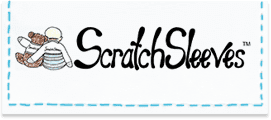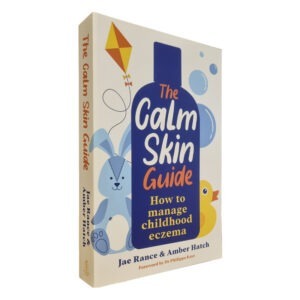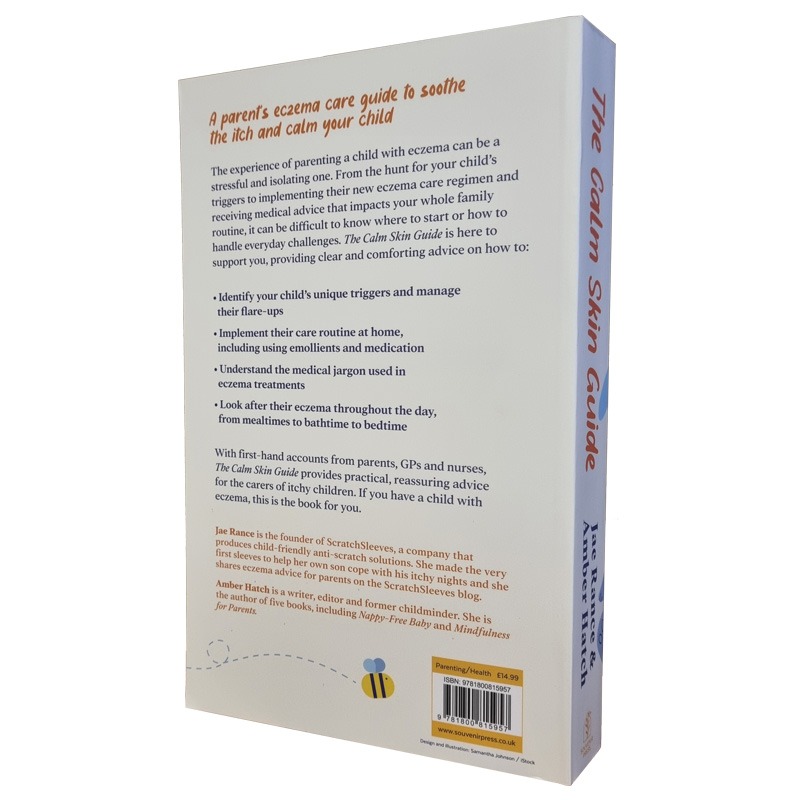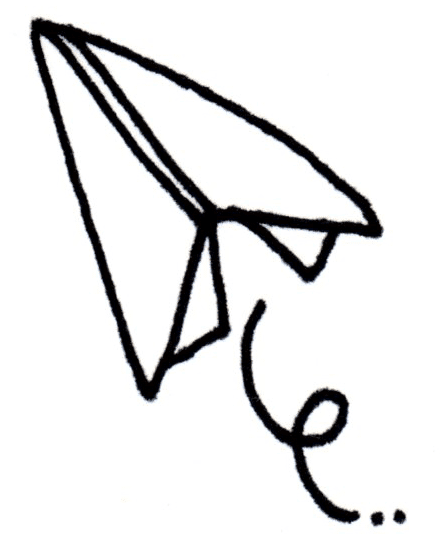Using topical corticosteroids creams for childhood eczema: Are steroid creams safe?



Looking at the conversations on parenting forums, it’s clear that many parents have concerns over using prescribed topical corticosteroid creams (TCS creams), like hydrocortisone, in managing their child’s eczema. In fact, there is so much anxiety around the use of TCS creams, that doctors have a term for it: ‘steroid phobia’. There is even a standardised questionnaire for assessing it. Rates of steroid phobia vary by country. It’s estimated that between 21% and 70% of parents with eczema children have some level of steroid phobia1.
As a result of steroid phobia, lots of children’s eczema goes under-treated. This results in longer flare-ups and increased complications such as infections. To address this very real fear and combat under-treatment, we have teamed up with Dr Sam Hunt, consultant dermatologist at the Royal Hampshire County Hospital, to look at the research into the safety of these creams and how best to use them.
The use of steroid creams in the treatment of eczema can be a complicated and emotive subject. But what most parents new to eczema want to know is ‘are steroid creams safe to use for my child?’. In the vast majority of cases the answer is ‘yes’. Topical steroids are effective and have an established safety record. However, they are not without risk and should only be used in line with medical guidance.
Treating childhood eczema: the basics
Emollients
As the parent of an eczema child, you know that the mainstay of treatment for eczema is complete emollient therapy. This includes applying emollients to the skin, as well as using them to wash with. The aim is to restore the skin’s moisture as well as preventing it from drying out any further.
Emollients should be used continuously even when the skin is good and the eczema is under control. This is to prevent future flare-ups and reduce the need for topical corticosteroids.
However, when a flare-up occurs, emollients by themselves are often not enough to control the itch that is characteristic of eczema. The itching causes children to scratch and this can cause significant damage to their already fragile skin. The inflammation and scratching associated with an eczema flare-up also increases the risk of itchy skin infections.
Steroid creams
One of the key aims of treatment in atopic dermatitis is to break the itch / scratch cycle. This cycle starts when the skin starts itching, the child then scratches causing damage to the barrier function of the skin, which makes the the skin get more itchy, the child scratches more, the skin gets more itchy and so it goes on. When the scratch / itch cycle sets in the skin never getting the chance to heal.
The aim of topical corticosteroid treatment is to bring eczema flare-ups back under control as quickly as possible. By getting the skin back under control quickly, the need for stronger steroids often be avoided. Early treatment also greatly reduces the risk of skin infections.
Many studies have shown that, used appropriately, the symptoms of eczema flare-ups can be rapidly controlled with steroid creams without side effects2.

What are topical corticosteroids…
The main purpose of topical corticosteroids is to reduce skin inflammation and irritation. They are not a ‘cure’ for eczema but rather a useful tool for controlling flare-ups and breaking the scratch/itch cycle. They are available in different forms, including creams, gels, and ointments.
‘Topical’ means applied directly to the skin. Corticosteroids are natural hormones made by the adrenal cortex (hence ‘cortico’) that can reduce inflammation (redness and swelling). They do this by suppressing the immune system and narrowing the blood vessels in the skin. The steroids used in TCS creams are produced synthetically
Prescribed TCS treatments range in strength from very mild (hydrocortisone) to super potent (clobetasol propionate-Dermovate) with gradations in between. GPs will typically prescribe very mild to moderate TCS creams for short periods (up to around 2-4 weeks). If your child needs stronger creams or prolonged treatment, they will typically be referred to a consultant.
..and why are TCS creams scary?
There has been a lot of bad publicity about steroid creams in recent years. The reasons for this are wide-ranging; from misinformation and horror stories on the internet right up to advice from trusted sources who are unsure of how to use the products correctly.
Side effects of steroid creams
Pharmacists are duty-bound to warn you of all possible side effects. They are completely in the right when they do this but it can sound alarming. Much of the confusion is down to the fact that there are different guidelines for selling TCS creams over the counter to those used for prescriptions. If you are confused or concerned call your doctor to double-check the information rather than just not using the prescription.
The side effects that people worry about are thinning of the skin and suppression of the bodies own natural production of steroids which could affect growth. There is also concern about the use of steroids on the face, particularly around the eyes. The reason for this is that if steroid creams get into the eyes they can cause eye problems. The National Institute for Clinical Excellence (NICE) looked at these risks, and concluded that the benefit of using topical steroids in eczema outweighs the potential harm from side effects when used correctly.
Steroid dependency
Perhaps the biggest fear behind steroid phobia is that of red skin syndrome, also known as ‘steroid addiction’ or ‘topical steroid withdrawal’. This occurs very occasionally when a person suddenly stops using topical steroids after years of frequent use. The skin has become dependant on externally supplied steroids to function normally. This is why it is so important to use TCS creams as they are prescribed. It’s also one of the reasons why doctors prefer to treat eczema ‘hard and fast’.
Topical corticosteroids withdrawal (sometimes called “topical steroid addiction” or “Red Skin Syndrome”) appears to be a clinical adverse effect that can occur when topical corticosteroids are inappropriately used or overused, then stopped. It can result from prolonged, frequent, and inappropriate use of moderate to high potency topical corticosteroids … It is thought that adult women who blush easily are a population particularly at risk. Very few cases have been reported in children, but no large-scale studies have attempted to quantify the incidence.
National Eczema Association: Education Announcement: Use of Topical Steroids For Eczema
Your doctor will be aware of the possible side effects and give you instructions about how long to use TCS creams, as well as how to stop using them.
So are steroid creams safe to use on children?
Provided that you use steroid creams as advised by your doctors the risk of side effects is extremely low. There are many studies into the safety of long-term use of low to mid potency topical corticosteroids typically prescribed for paediatric patients2. The safety of stronger steroid creams for intermittent usage (to manage serious flare-ups) and ‘weekend therapy’ is also well established3. Within the NHS, these stronger steroid creams are typically only prescribed by consultant dermatologists who are well aware of the possible side effects and will be monitoring your child as treatment progresses.
As mentioned above, doctors often choose to treat childhood eczema ‘hard and fast’. This is because studies have shown that this approach usually results in much faster results with no measurable increase in side effects meaning that treatment with steroid creams can be stopped sooner4. There is also increasing evidence that treating eczema in babies quickly reduces the risk of serious allergies later in life.
If you child sufferers from severe eczema, it may not be possible to maintain their skin with just emollients of maintenance and steroid creams for flare-ups. In this case it is likely that you child will be offered topical calcineurin inhibitors. This avoids the prolonged use of steroid creams. Calcineurin inhibitors work by blocking a specific protein called calcineurin, which plays a role in the activation of immune cells. This dampens down the inflammation and associated itching. Calcineurin inhibitors can be used for both flare-ups and maintenance and used in combination with steroid creams.
How much steroid cream should I be using
Typically we will need to apply steroid creams only once a day. You will need to do this alongside applying your usual emollients. Unlike emollients, steroid creams should only be applied to active eczema, not healthy skin. There is little consensus over which order you should apply the creams in. However, you do need to leave about 15-20 minutes between applications. This ensures that steroid creams aren’t moved away from the active eczema (if you apply the steroid cream first); or that the steroid cream isn’t diluted by the emollient (if you apply emollients first).
In the words of an eczema nurse, you should use just enough steroid cream to make the skin glisten. Obviously this only works if you apply the steroid cream before your emollient.
You may also have come across the terms one finger tip unit. A finger tip unit is the amount of cream that you can squeeze across one of your finger tips. This squeeze of steroid cream should cover the area that you can cover with your hand. This works because all cream tubes have the same sized nozzle.
How do I stop using steroid creams safely
If you have been prescribed a mild steroid cream and it has worked within the prescribed period, continue to use the steroid cream for a couple of days after the skin has healed. You can then stop using the cream, just keep an eye out for any rebound flare-ups. You will need to continue using your emollient creams.
If you’ve been prescribed a stronger steroid cream you may need to taper its use. Your doctor will give you instructions. These are likely to be along the lines of reducing applications to every other day, and possibly switching to a milder steroid cream or ‘weekend therapy’. Weekend therapy is when the steroid creams are only applied on one or two consecutive days each week. Again, we will need to continue using emollient creams.
If your steroid cream doesn’t clear up the eczema within the prescribed period you will need to go back to your doctor for a review of the medication. You may need a stronger cream. The same is true if your prescribed cream is having little effect after the first 3-5 days of application. Don’t continue using steroid creams beyond the initial prescribed period without further medical guidance.
Dr Hunt’s approach to prescribing TCS treatments
While every case is different, if the eczema is severe I normally recommend the use of a moderately potent steroid such as mometasone (Elcon) used once daily for a period of up to two weeks, I then use it alternate days for a week and then step down to the mild steroid, hydrocortisone used as and when needed.
If there is a significant flare subsequently, I recommend stepping back up to the stronger steroid to regain control and then gradually coming back down again. If there is a significant flare and the skin is infected then antibiotics may be used in addition to the emollients and topical steroids.
Antihistamines are also useful and there are non-sedating products for use in the daytime like Piriteze and sedating products for the nighttime like Piriton – which can help with sleep.
In addition to emollients, topical steroids and antihistamines, the use of wet wraps, cotton garments, cotton gloves and anti-scratch clothing like ScratchSleeves may be useful in soothing the skin and avoiding further damage to the skin.
If your child is still struggling despite the use of all these measures please ask your GP to refer you to a dermatologist.
Our sources
- Li, A., Yin, E., & Antaya, R. (2017, October). Topical corticosteroid phobia in atopic dermatitis: A systematic review. JAMA dermatology. https://pubmed.ncbi.nlm.nih.gov/28724128/
- Siegfried , E., Jaworski, J., Kaiser, J., & Hebert, A. (2016, June). Systematic review of published trials: Long-term safety of topical corticosteroids and topical calcineurin inhibitors in pediatric patients with atopic dermatitis. BMC pediatrics. https://pubmed.ncbi.nlm.nih.gov/27267134/
- Axon, E., Chalmers, J., Santer, M., Ridd, M., Lawton, S., Langan, S., Grindlay, D., Muller, I., Roberts, A., Ahmed, A., Williams, H., & Thomas, K. (2021, June). Safety of topical corticosteroids in atopic eczema: An Umbrella Review. BMJ open. https://pubmed.ncbi.nlm.nih.gov/34233978/
- Lebwohl, M. (1999, August). A comparison of once-daily application of mometasone furoate 0.1% cream compared with twice-daily hydrocortisone valerate 0.2% cream in pediatric atopic dermatitis patients who failed to respond to hydrocortisone: Mometasone Furoate Study Group. International journal of dermatology. https://pubmed.ncbi.nlm.nih.gov/10487451/
Here at ScratchSleeves, we don’t just share our experiences of bringing up an eczema child and favourite allergy-friendly recipes, we also manufacture and sell our unique stay-on scratch mitts and PJs for itchy babies, toddlers and children. We now stock sizes from 0-adult years in a range of colours. Visit our webshop for more information.
The Calm Skin Guide
Love our blog? It's also available in book format with:
- First hand accounts from parents & medical professionals
- Easy navigation
- Comprehensive index
- Additional material
Signed copies available at no extra cost
Written by:

Reviewed by:
Interesting article? Don't keep it to yourself...
Read next...
You may also find helpful...
Quick buy


Multi Buy Discount

Spend between £30 - £60 and save 5%
Spend between £60 - £120 and save 10%
Spend over £120 and save 15%
Discount automatically applied at checkout
No Quibbles Guarantee
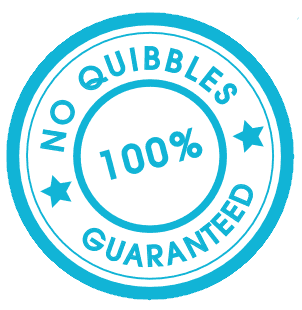
ScratchSleeves abide by a no quibbles guarantee.
Free UK Postage

Free packing and postage on all UK orders. For overseas orders to Europe postage is from £3.50, to USA is £6.50 and to the rest of the world, from £3.75.

